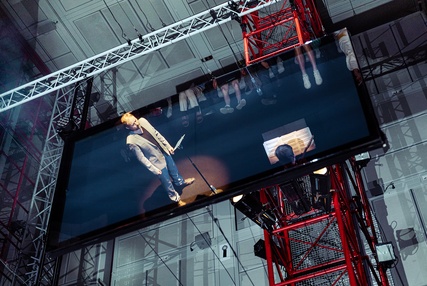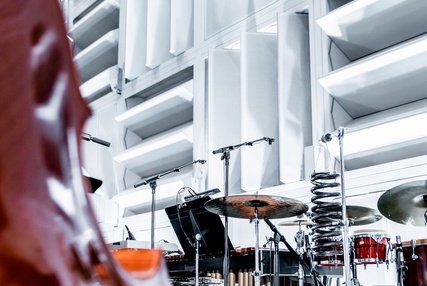1977-2023 : L'Odyssée de l'Espace de Projection [1/3]
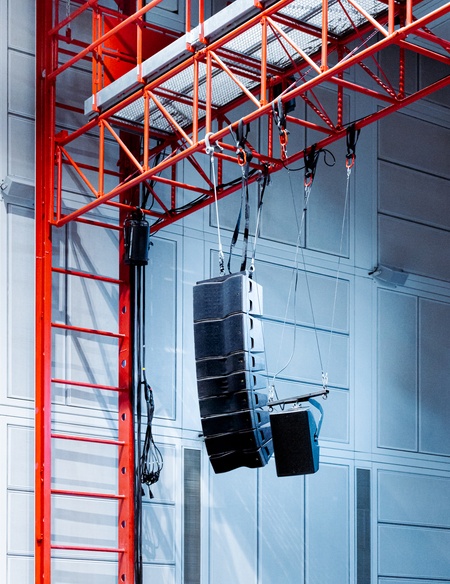 Expériences underground
Expériences underground
« Cet espace n’est vraiment pas une salle de concerts mais il peut projeter du son, de la lumière, des événements audiovisuels, tous les événements possibles mais qui ne sont pas liés forcément aux instruments traditionnels », déclarait en 1978 Pierre Boulez, son concepteur (avec l’architecte Renzo Piano), lors de l’inauguration de l’Espace de projection de l’Ircam (Espro pour les intimes), ouvert en septembre de l’année précédente. Au moment même où, en surface, de King’s Road à Londres au quartier des Halles à Paris, le mouvement punk commence à propager son onde de choc, en sous-sol ce sont d’autres révolutions musicales qui s’apprêtent à avoir cours. Situé à 16 mètres de profondeur sous la place Stravinsky, accessible après des escaliers, l’Espace de projection est une boîte dont parois et plafonds sont mobiles, grâce aux fameux périactes : tirant leur nom de la tragédie grecque, les périactes sont des modules prismatiques à trois faces (absorbante, réfléchissante et diffusante), prétextes à toutes les aventures acoustiques. Un « énorme cube, au volume impressionnant »*, se souvient Éric de Visscher, directeur artistique de l’Ircam de 1997 à 2003 ; un cocon qui va commencer par être un objet d’étude à part entière, souligne Olivier Warusfel, responsable du pôle Espaces acoustiques et cognitifs de l’Ircam, où il est entré en 1983 : « Dans les années 1980, il s’agissait de mener une recherche sur l'acoustique architecturale tout en accordant une attention particulière à la perception auditive. Non seulement mesurer, modéliser et juger la qualité acoustique d’une salle de concerts, mais aussi comprendre comment l’audition peut être une dimension importante pour nous représenter dans l’espace, nous représenter l’espace lui-même. Autant que la vue en effet, les événements sonores permettent de se situer dans l’espace. Et si la vision est plus précise spatialement, l’audition, elle, nous sert en permanence car nous entendons à 360°… »
« Cet espace n’est vraiment pas une salle de concerts mais il peut projeter du son, de la lumière, des événements audiovisuels, tous les événements possibles mais qui ne sont pas liés forcément aux instruments traditionnels. » Pierre Boulez
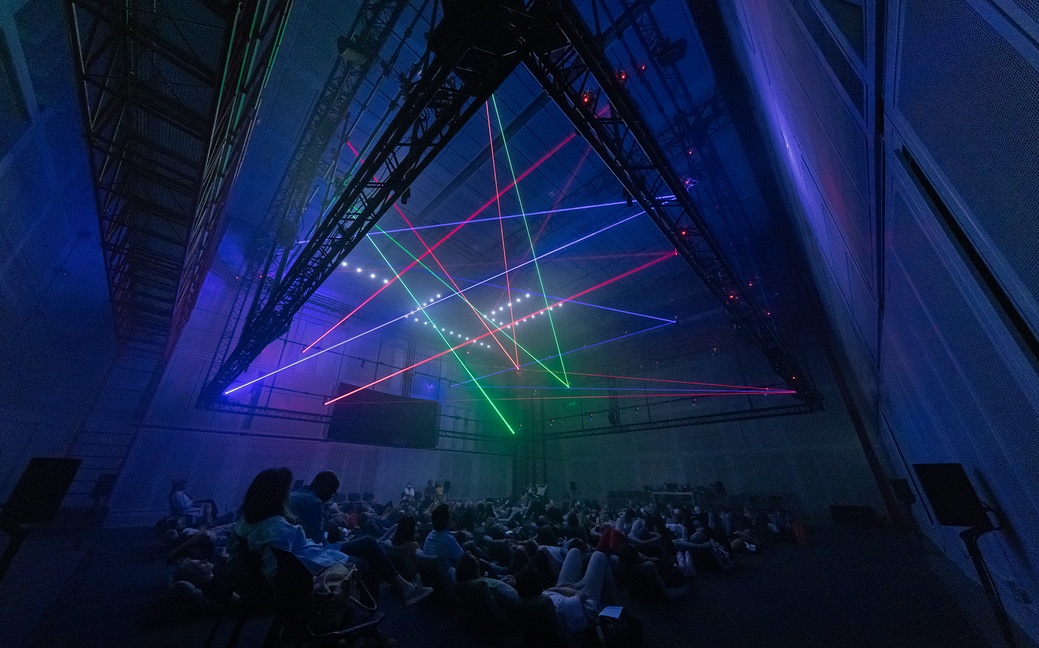 Polytopes de Cluny, réouverture de l'Espace de projection en juin 2022 © Ircam-Centre Pompidou, photo : Quentin Chevrier
Polytopes de Cluny, réouverture de l'Espace de projection en juin 2022 © Ircam-Centre Pompidou, photo : Quentin Chevrier
La première œuvre musicale à voir le jour à l’Espace de projection sera Répons de Pierre Boulez. Bien que créé à Donaueschingen (en 1981) pour des questions de « jauge », Répons a pris forme à l’Espace de projection, comme le rappelle Andrew Gerzso, qui en fut le RIM (réalisateur en informatique musicale) : « On s’est servi de l’Espro pour des expérimentations sur la spatialisation, la manière d’orchestrer les solistes… » Il ajoute : « Boulez n’aimait pas la musique sur bande, il voulait que l’électronique se mêle à l’instrumental d’une façon naturelle, d’où la nécessité d’avoir une machine en temps réel pour transformer le son. On a donc beaucoup travaillé sur les différents types de transformation, en faisant venir les solistes d’abord individuellement, puis ensemble. »
« L’Espro était un laboratoire de travail. » Andrew Gerzso
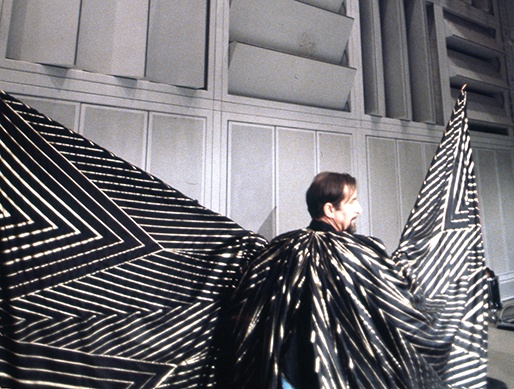 L’autre grand moment public de ces années-là est le Casta Diva du chorégraphe Maurice Béjart, créé le 17 mars 1980 sur une musique d’Alain Louvier. L’année suivante, l’Américain Rolf Gehlhaar donne Pas à pas, pour bande et dispositif de spatialisation. L’œuvre, qui fait intervenir (sur bande) le flûtiste Alain Marion et le saxophoniste Jean-Louis Chautemps, est sous-titrée Music for ears in motion. Andrew Gerzso se rappelle « une pièce assez drôle, minimaliste, où l’espace était vide sauf pour des HP avec des sons électroniques conçus pour créer des phases sonores dans l’espace. En fonction de l’endroit où l’on se trouvait et de la manière dont on évoluait dans l’espace, on entendait des choses différentes. J’ai gardé une image forte de Boulez tenant par le bras Alain Marion et se promenant dans cet espace pour entendre de nouveaux sons… »
L’autre grand moment public de ces années-là est le Casta Diva du chorégraphe Maurice Béjart, créé le 17 mars 1980 sur une musique d’Alain Louvier. L’année suivante, l’Américain Rolf Gehlhaar donne Pas à pas, pour bande et dispositif de spatialisation. L’œuvre, qui fait intervenir (sur bande) le flûtiste Alain Marion et le saxophoniste Jean-Louis Chautemps, est sous-titrée Music for ears in motion. Andrew Gerzso se rappelle « une pièce assez drôle, minimaliste, où l’espace était vide sauf pour des HP avec des sons électroniques conçus pour créer des phases sonores dans l’espace. En fonction de l’endroit où l’on se trouvait et de la manière dont on évoluait dans l’espace, on entendait des choses différentes. J’ai gardé une image forte de Boulez tenant par le bras Alain Marion et se promenant dans cet espace pour entendre de nouveaux sons… »
En 1984, c’est même l’impro qui s’invite à l’Espro, avec la Rainbow Family de George Lewis, où interviennent la contrebassiste Joëlle Léandre et le guitariste Derek Bailey. Et en 1987, la création de Jupiter de Philippe Manoury, feu d’artifice technologique (synthèse, spatialisation, etc.) pour flûte et électronique en temps réel, vient célébrer en grande pompe ces dix ans, déjà, de « recherches spatiales ». Dix années d’aventures acoustiques tous azimuts et de face-à-face avec les machines. Dix années au cours desquelles se seront croisées dans les travées de l’Espace de projection des personnalités musicales aussi différentes que Steve Reich, Kaija Saariaho ou Emmanuel Nunes.
Photo 1 : Espace de projection, janvier 2023 © Ircam-Centre Pompidou, photo : Quentin Chevrier
Photo 3 : Maurice Béjart, Casta Diva © Gamma/Michel Folco
*Tous les entretiens ont été réalisés par Sandrine Maricot Despretz (Hémisphère son).
par Sandrine Maricot Despretz et David Sanson (Hémisphère son)
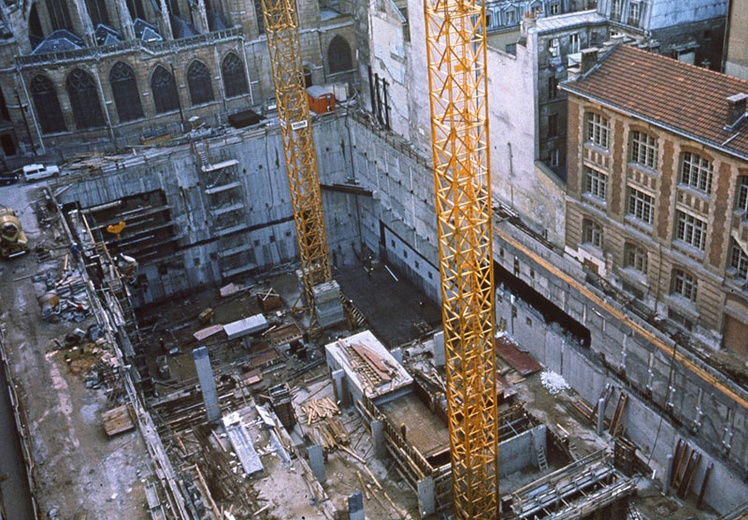 Chantier de l'Espace de projection
Chantier de l'Espace de projection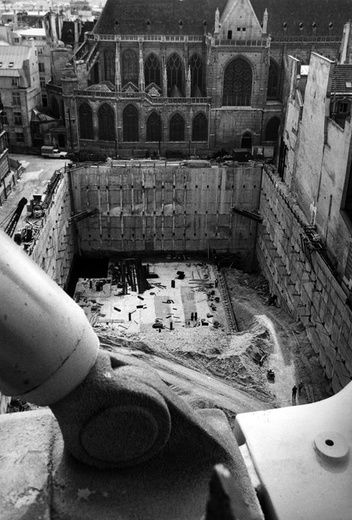 Chantier de l'Espace de projection
Chantier de l'Espace de projection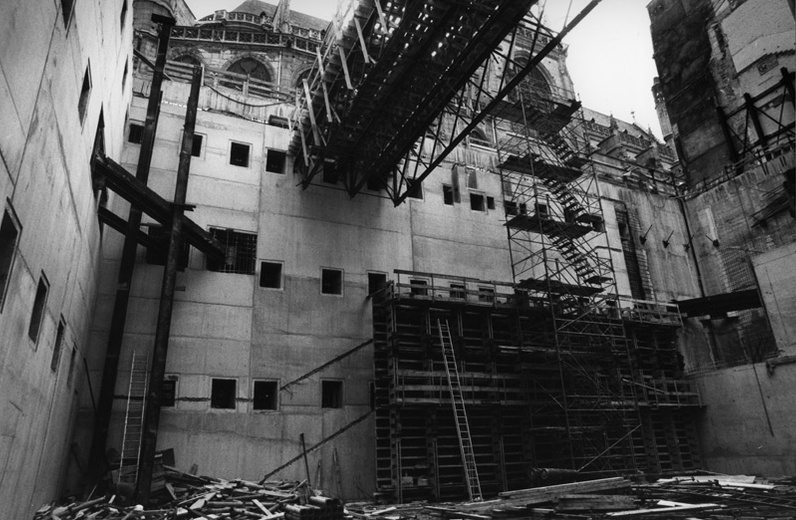 Chantier de l'Espace de projection
Chantier de l'Espace de projection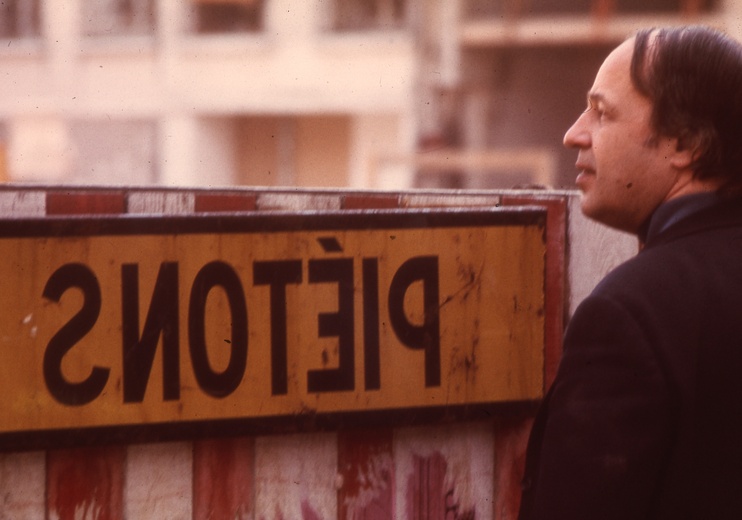 Pierre Boulez, chantier de l'Espace de projection
Pierre Boulez, chantier de l'Espace de projection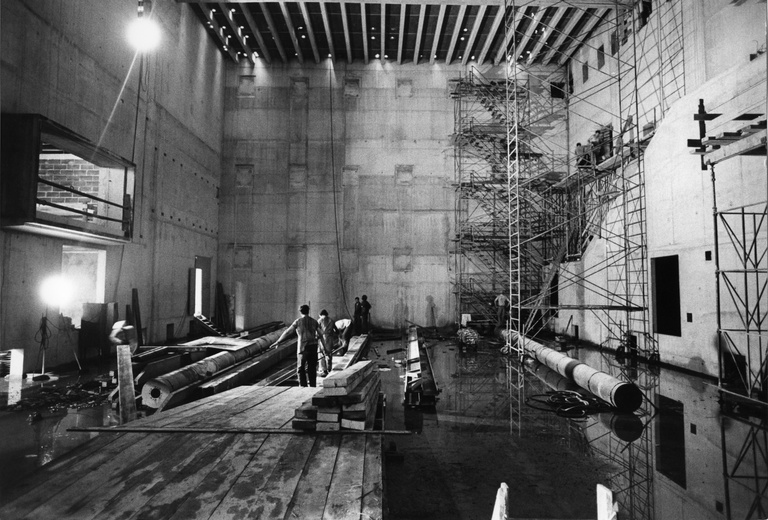 Chantier de l'Espace de projection
Chantier de l'Espace de projection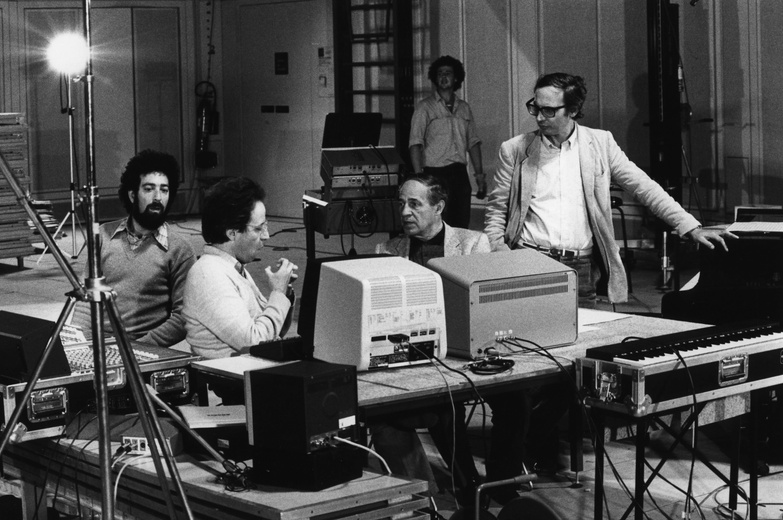 Pierre Boulez avec, de gauche à droite, Didier Arditti, Andrew Gerzso et Giuseppe di Giugno travaillant avec le dispositif électroacoustique pour Répons à l'Espace de projection (1980) © Fabien Chalhoub
Pierre Boulez avec, de gauche à droite, Didier Arditti, Andrew Gerzso et Giuseppe di Giugno travaillant avec le dispositif électroacoustique pour Répons à l'Espace de projection (1980) © Fabien Chalhoub



